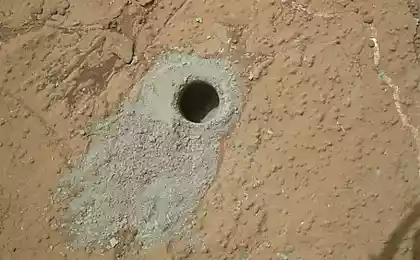525
Scientists investigating traces of life on Mars
Scientists have found that the darkening occurring on the surface of the stone, may be the following microorganisms which are easily recognized by the increased concentration of magnesium.

News source
Darkening at the hard stone (rock varnish) are quite common on the planet in different climatic zones, but the nature of their origin is controversial.
The study authors analyzed the surface darkening on the rocks in line with one of the streams of New York City. This was used for a scanning microscope, having a dual focused ion beam (FIB-DB). Unlike a conventional microscope, this device can scan the specimen surface by a flow of ions, not electrons.
This makes it easy to cut the sample to penetrate the deeper layers of the material.
The scientists were able to detect a large number of entities in the structure of complex shape darkening, which may be the remains of fungi, algae and bacteria. The fact that these patterns occurred abiotic highly unlikely.
The study authors noted that this work is of very great importance to search for traces of life on Mars. Darkening present on rocks commonly contain magnesium at high concentration - is one of the trace elements that are essential for the functioning of many enzymes.
If all related deposits are biological in origin, it can give scientists hope to find on Mars traces of the existence of micro-organisms on the analysis of the chemical composition of rocks.
Source:

News source
Darkening at the hard stone (rock varnish) are quite common on the planet in different climatic zones, but the nature of their origin is controversial.
The study authors analyzed the surface darkening on the rocks in line with one of the streams of New York City. This was used for a scanning microscope, having a dual focused ion beam (FIB-DB). Unlike a conventional microscope, this device can scan the specimen surface by a flow of ions, not electrons.
This makes it easy to cut the sample to penetrate the deeper layers of the material.
The scientists were able to detect a large number of entities in the structure of complex shape darkening, which may be the remains of fungi, algae and bacteria. The fact that these patterns occurred abiotic highly unlikely.
The study authors noted that this work is of very great importance to search for traces of life on Mars. Darkening present on rocks commonly contain magnesium at high concentration - is one of the trace elements that are essential for the functioning of many enzymes.
If all related deposits are biological in origin, it can give scientists hope to find on Mars traces of the existence of micro-organisms on the analysis of the chemical composition of rocks.
Source:
























